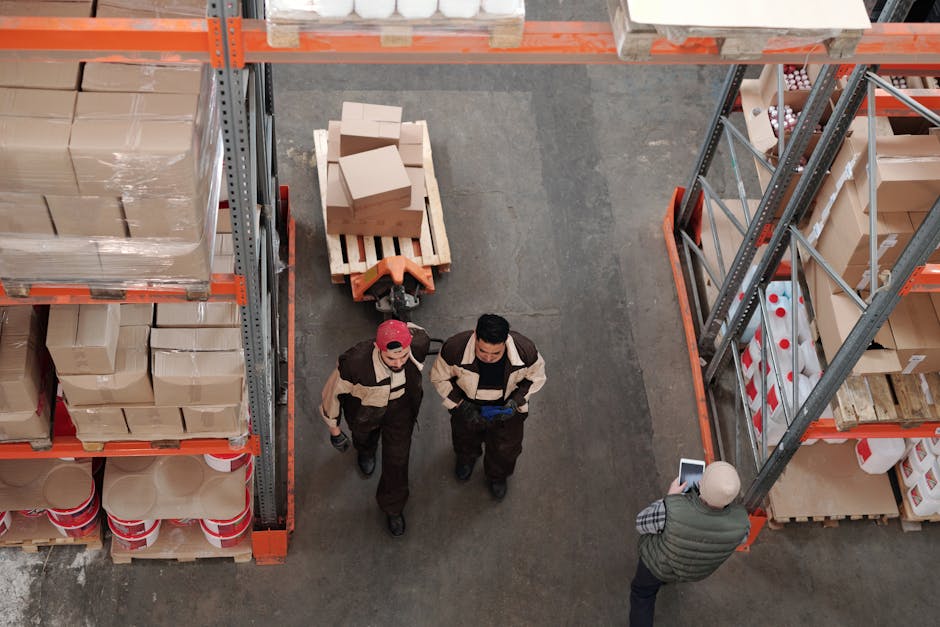The Rise of AI Artisans: Redefining Craftsmanship in Business
In the heart of today’s entrepreneurial landscape, a digital renaissance is unfolding. We are witnessing the birth of the "AI artisan," where automation and artificial intelligence redefine what craftsmanship means in business. This exciting convergence of creativity and technology unveils new possibilities for entrepreneurial endeavors. As the demands of the modern market become more intricate, understanding how AI tools can elevate craftsmanship and efficiency is not just beneficial—it's essential.
The Fusion of Technology and Craftsmanship

For centuries, craftsmanship has been associated with human skill. The artisan took pride in their ability to create, design, and innovate by hand. Fast forward to 2025, and the landscape is bathed in a digital glow where AI does not replace human artisans but rather enhances their capabilities. The modern artisan is now a hybrid of artisan and technologist—navigating through digital tools to harness the power of AI.
This blend of human creativity and machine precision is reshaping industries. From visual arts to product design and even customer service, the notion of craftsmanship has evolved. AI tools allow for rapid prototyping, complex design simulations, and even predict customer preferences, thus paving the way for businesses to craft not just better products but also more personalized consumer experiences.
The Digital Craftsman: A New Skill Set

To succeed in this new age of digital entrepreneurship, business owners must cultivate a fresh set of skills. Understanding how to leverage AI tools to enhance their craft is at the forefront. Take, for example, how businesses are using AI to personalize marketing strategies.
AI-driven tools now analyze consumer behavior at a granular level. For entrepreneurs, this means that they can tailor their messages and products with precision, drawing insights from vast datasets. Brands that once struggled to connect with their audience now utilize AI analytics in real-time to craft messages that resonate.
But it's not just about algorithms; it's about creativity. AI can suggest design styles, optimize supply chains, or enhance user experience through adaptive interfaces. As these intelligent systems take on more tasks, business owners can focus on what truly matters—creating remarkable products that stand out in a crowded marketplace.
Tools Transforming Business Craftsmanship

AI in Design and Production

Modern tools like Adobe Sensei and Autodesk's generative design software are revolutionary. They empower designers to produce complex models in a fraction of the time it would take manually. Want to produce sustainable packaging that meets specific requirements? AI-driven solutions can analyze various materials and design prototypes that optimize for durability and eco-friendliness.
Customer Experience: A New Frontier

The emotional connection between a brand and its customers is cultivated over time but can be accelerated using AI. For instance, businesses can implement chatbots that provide personalized recommendations or customer service, leading to enhanced customer satisfaction. This is more than just automation; it's about creating a seamless experience that feels uniquely tailored, fostering brand loyalty.
Explore more about how technology is reshaping this area in our post on redifining customer service.
AI-Driven Marketing Strategies

AI algorithms analyze patterns in consumer behavior, allowing businesses to predict trends and craft marketing strategies that align with real-time market shifts. Utilizing tools like HubSpot and SEMrush, entrepreneurs can tailor campaigns that speak directly to consumer interests—resulting not just in higher conversion rates, but also in the cultivation of meaningful relationships.
Streamlining Operations and Efficiency

AI tools are now essential in optimizing operations. From inventory management to logistical planning, businesses can employ AI to oversee processes that require precision and predictive analytics. For a deeper understanding of how automation streamlines operations, check our detailed article on transforming business operations.
Overcoming Challenges and Ethical Considerations

As we embrace these changes, it's crucial to acknowledge the challenges that accompany such a transformative shift. Ethical concerns surrounding automation and the future of employment cannot be overlooked. While AI enhances efficiency and precision in production, business leaders must navigate the delicate balance of utilizing technology while preserving the human touch. This is where the impending discussions about ethics in AI become paramount. Entrepreneurs must engage in ongoing dialogue about responsible AI practices.
Nurturing the Human-AI Collaboration

Every successful integration of AI tools into business models parallels a profound understanding of human creativity. The notion of collaboration—between man and machine—is the cornerstone of this digital revolution. Entrepreneurs who view AI as a partner rather than a replacement can harness increased productivity while preserving the artisanal spirit that defines craftsmanship.
Evolving the Business Mindset

Changing mindsets about work, creativity, and production will be equally critical for harnessing the true potential of AI. Instead of fearing job displacement, companies are beginning to visualize a future where human ingenuity drives the purpose of technology. This evolved perspective fosters a work environment where innovation thrives, leading to higher employee satisfaction and retention.
Delve deeper into this transformative narrative in our featured content: transforming employee experience.
Examples of Successful AI Integration in Business

As we examine success stories, several businesses stand out for effectively integrating AI into their craftsmanship, amplifying both creation and efficiency.
Case Study: Nike and Customization

Nike leverages AI in their online merchandising by utilizing the Nike By You platform. This innovative tool allows customers to customize their footwear, integrating their individual style preferences. By utilizing AI-driven algorithms that predict trends and personal preferences, Nike not only retains customer loyalty but also engages them in the artistry of their brand.
Case Study: Asos and Predictive Analytics

Fashion retailer Asos has adopted AI algorithms to analyze customer data, refining their inventory and predicting which products will succeed based on trends and consumer demand. By doing so, they have increased their sales significantly while keeping customer satisfaction at the forefront of their strategy.
The Future of AI Artisans
As we move forward, the role of the AI artisan will only continue to expand. The intersection of creativity and technology will unlock fresh perspectives in product development, operational efficiency, and customer engagement.
Given the rapid pace of AI advancement, staying informed about the latest trends and tools will be essential for entrepreneurs. Engaging with AI not only opens new doors—it also demands a commitment to continuous learning. As new generations enter the workforce with unique perspectives on technology, the synergy between human creativity and AI capabilities will continue to evolve, informing how businesses operate within the global marketplace.
Final Thoughts: Embrace the AI Artisan Mindset
The rise of AI artisans signals a thrilling chapter in business history, where technology and craftsmanship can coexist in harmony. By adopting a mindset that embraces change and innovation, entrepreneurs can carve a niche that celebrates artistry in a digital age.
Whether you run a small business, work in design, or have aspirations of entrepreneurship, the key takeaway is clear: leverage AI tools as a means to enhance your craft, not replace it. Fostering genuine connections with your audience through deep personalization and attention to detail will set your brand apart.
The time has come for you to become an AI artisan in your field. Research, experiment, and engage with the tools available to cultivate a business model that thrives on creativity and technology. After all, the future is bright for those willing to adapt and innovate!


